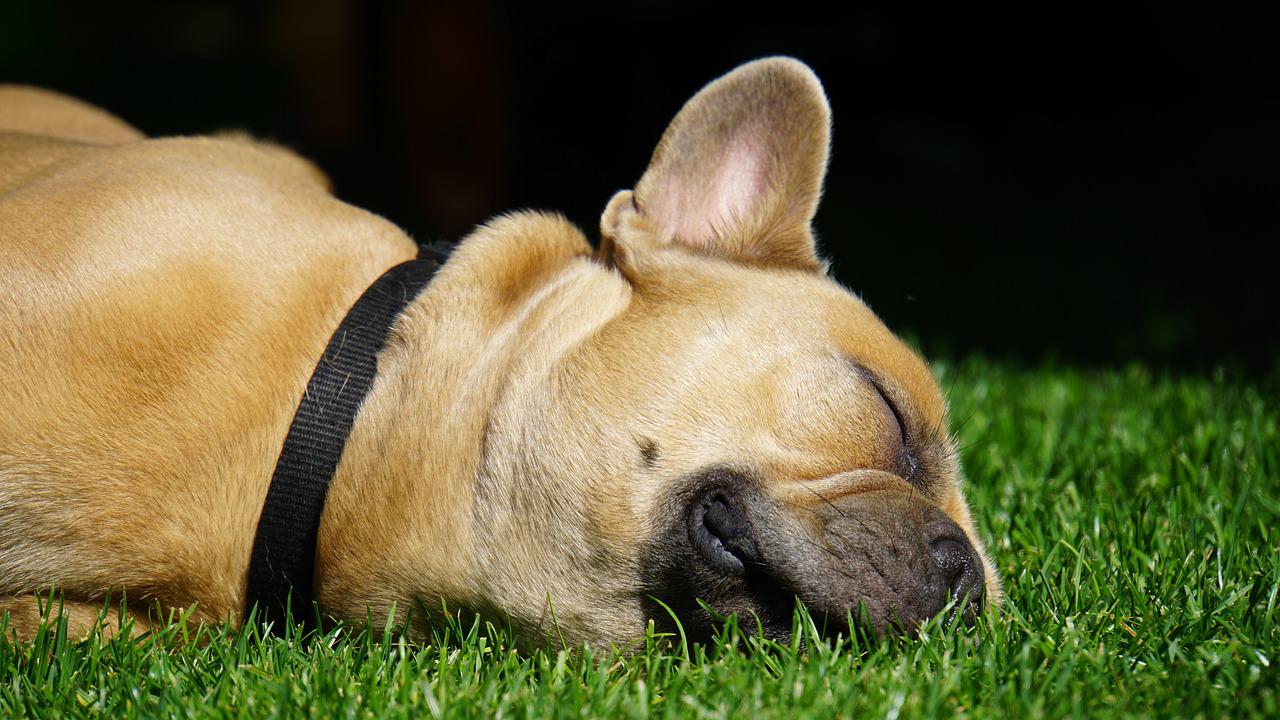If you have spent time with a dog, this is not a new scene; seeing your dog begin crying and whimpering suddenly while deep in his sleep. This behavior should not freak you out, especially if you are a first-time dog owner.
It is common for many dogs to cry in their sleep. Most likely, your dog could be dreaming. However, monitor your dog, as the whining can indicate pain, anxiety, or seizures.
Read on to find out why dogs cry in their sleep. When to be concerned? What to do when this happens?
reasons why dogs cry in their sleep

Your dog crying while sleeping may leave you concerned and helpless. Your concern might be due to the thought of it being in pain. However, this is not the only reason behind the tears.
There are at least five known common reasons dogs cry and whine in their sleep. It can be due to pain, anxiety, seizures, dreaming, or normal puppy behavior.
Your dog could be dreaming.
Like humans, dogs have a sleeping cycle that can either be a heavy or light sleep phase. However, dogs’ sleep cycles are usually shorter compared to human beings.
Dogs can experience both sleep cycles in a 45-minute nap. In each sleep cycle, there will be a period of rapid eye movement (REM) for about 1-5 minutes.
REM is a period when your dog gets to dream. You will notice your dog act out its dream by making faces, moving paws and legs, whimpering, or shedding tears. At this moment, your dog’s eyes will flutter and move.
For any healthy dog, this is a very normal sleeping pattern. Therefore, the next time you see your dog crying in their sleep, the tears will likely not be an area of concern or a sign of distress. But, it can indicate that your dog is deep in his sleep and probably dreaming.
REM sleep Behavior Disorder
Despite being normal for your dog to cry in its sleep, sometimes the cry can be a sign of an underlying health issue that requires your attention to address.
The unusual crying could be a result of REM sleep behavior disorder. This disorder is created when the mechanism responsible for preventing your dog’s body from acting out its dream fails to function properly.
A dog suffering from this disorder not only moves their legs while deep sleep but can also rise and run into walls. Some even go to the extent of biting people or objects around them. This behavior threatens the dog itself and the people around it.
However, despite the extreme behavior, this disorder can be treated. Your dog can be diagnosed with medications like clonazepam.
It could be a seizure.
Another alarming cause is a seizure disorder. Seizures happen when the brain experiences a sudden electrical spike. When this happens, the dog does more than just move the leg. Instead, it releases a vocalized cry while twitching the paws and face.
The challenge arises in distinguishing between a night of normal REM sleep and a seizure. Seizures usually strike while the brain changes from one state to another. So it could be from sleep mode to being awake. Small seizures (petit mal) have similar signs to REM sleep.
If the seizures keep happening regularly, you should take notes and record the entire scene. A video record is an appropriate means to keep a record which will make your work easier as you explain the situation to the vet.
As much as you sympathize with your dog, please do not touch, shake or wake it at any cost while in this state. As your dog is experiencing a seizure, it is highly vulnerable and can bite you.
Your dog might be suffering from anxiety.
Anxiety or illness could be another possible cause for your dog to cry out of normal in their sleep. On top of crying, you will notice your dog pacing, biting a patch of raw skin, drooling excessively, scratching unusually, or retching.
Your dog will whine at night to relieve daily stress via their dreams. If you realize your dog is fearful some few hours after waking, it is good to calm her down. Give it time to settle into a new routine. You can also ask your vet for better options to treat the anxiety.
Some common diseases in a dog that bring them so much pain is musculoskeletal, gastrointestinal, or neurological. Musculoskeletal is a joint disease where pain increases during the night compared to daytime.
Lying down at night exerts pressure on the affected joints, whereas, during the day, weight is not much felt in the joints due to constant movement.
Expected poppies’ behavior
Compared to older dogs, puppies have more vocals as they sleep. They tend to dream more due to a lot of new information intake. Therefore at night time is the hour to reflect and process all this in their minds.
Also, just like humans, no kid like being separated from their parents. Once a puppy is separated from its mother, they are left with anxiety making them cry at night.
- Here are some things you can do to help your pup sleep without whining.
- Tire your puppy out with different games before bed
- Place a blanket or toy that has the pup’s mother’s scent
- Warm up your pup at night
Conclusion
Your dog crying in sleep can be normal or due to other issues like anxiety. Either way, do not be tempted to wake it. Instead, document the entire scene using a short video and show it to a vet.
Disrupting your dog’s sleep suddenly can lead to serious consequences. Due to being startled and scared, your dog will take some minutes before realizing it was all a dream. In those few minutes, you might end up getting bitten or scratched.

